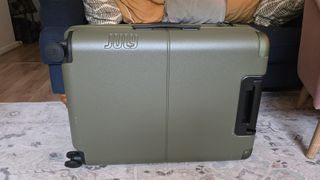Home
Explore Home
Latest about Home

How to stop snoring: 7 tips from a board-certified physician
By Michele Ross last updated
How to stop snoring, according to a quadruple board certified physician and sleep specialist.

Best robot lawnmowers of CES
By Mike Prospero published
Some of the more interesting robot lawnmowers we saw at CES 2026, including models that can go up nearly 45-degree angles and others that can act like guard dogs.

Homeowners warned of the ‘super termite’ that eats more than wood — what you need to know
By Cynthia Lawrence published
Beware of the 'super termite' that’s munching more than wood. Find out why this is a nightmare for homeowners.

You can de-ice your car windshield in seconds with this one kitchen item — here's how
By Kaycee Hill published
Learn how to de-ice your car windshield quickly and safely using a ziplock bag filled with warm water instead of scraping.

5 reasons your peace lily's leaves are turning brown
By Kaycee Hill last updated
Those brown leaves mean your peace lily is in trouble. Learn the 5 mistakes to fix immediately, so you can keep your houseplant happy and healthy.

IKEA's latest collection is a plant parent's dream, and it starts at just $9
By Grace Dean published
These three items are already in my basket

You don't need another plastic box — these 3 reusable items are totally free, and ideal for storage
By Grace Dean published
Keep your belongings organized without spending a penny

I'm terrified of losing my luggage but this smart suitcase with built-in tracking fixed my flight anxieties
By Millie Fender published
I'll be using my July Casesafe in August, September, October... any time to avoid losing track of my luggage again.
Here at Tom’s Guide our expert editors are committed to bringing you the best news, reviews and guides to help you stay informed and ahead of the curve!
 Club Benefits
Club Benefits







